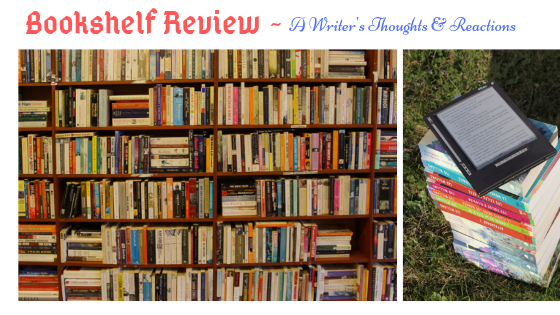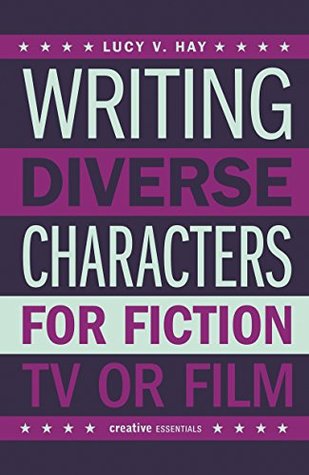As my writing begins to touch on diversity and minority rights issues, I knew that I should expand my reading. This novel is my first fantasy that I’ve read that is willing to move beyond the narrow taboos of modern society.

Dragonoak: The Complete History of Kastelir (Dragonoak #1)
by Sam Farren
After being exiled to the farmland around her village, Rowan Northwood takes the only chance at freedom she might ever get: she runs away with a passing Knight and doesn’t look back. The woman cares nothing for Rowan’s company, but nor does she seem perturbed by the powers that burn within her.
Rowan soon learns that the scope of their journey is more than a desperate grasp at adventure. She breaks away from the weighty judgement of her village, but has no choice but to abandon her Kingdom altogether. Sir Ightham’s past leads them through Kastelir, a country draped in the shadow of its long-dead Queen—a woman who was all tusks and claws and great, spiralling horns.
Hiding her necromancy is no longer Rowan’s greatest challenge, and what leads them across Kingdoms and through mountains is a heavier burden than she ever could’ve imagined.
Review 3.5 stars
I was drawn to read this book as the blurb, and the reviews promised an engrossing fantasy novel where diversity was the norm. I found the opening intriguing with a fascinating backstory trickled out, not dumped on me. Rowan Northwood as a narrator is driven to leave her village by the attitude of the people that saw her as a healer until they discovered her hidden power.
Her journey is one of discovery, about the world that she only knows from her brother Michael’s stories and about other people. However, she is not the protagonist as that is Sir Ightham, a female knight that is well-portrayed as the norm. At first, Rowan is intrigued and inspired by Sir Ightham, but as she discovers more about the knight, a real attraction grows. Personally, I found it difficult to relate to such a distant protagonist, but I kept reading knowing that through Rowan, I should discover more.
Many of the characters are not the fantasy norm exactly. This aspect of the world-building delivered, as did the world beyond Michael’s books, and this element kept me wanting more. The third intriguing character was an asexual called Rán, whose race, the pane, were central to the story – I must avoid spoilers and say little more about that.
When Rán appears, Rowan calls her ‘she’ and for the rest of the book Rán is a ‘she’. But the pane are asexual or transgender, and the pronoun for them individually is ‘they’. However, once I had adapted my mindset to using this gender-neutral pronoun, confusion set in. Why was Rán ‘she’ but other single pane were almost all ‘they’? What about this sentence:
A handful of younger pane crept up on us. Their leader, a girl with the first signs of a right horn showing, inched her way to the steps. I raised a hand to wave and they shrieked, scattering like ants.
I kept reading engrossed in the story – but after researching ‘gender-neutral pronouns’. Other elements threw me, like the treatment of the horses that grated with everything I knew as a retired equestrian journalist.
The jigsaw remained complicated and unclear – well to Rowan as the narrator but not the protagonist – but eventually, after some unnecessary scenes of excessive world-building, the plotlines took shape through new arrivals, encounters and interruptions. The mysterious quest remained unclear.
More began to grate. Some reviews had mentioned there were “a few typos”, but those would have mortified me if my writing had so many. I had to keep re-reading sentences and amending them. Anyway, back to worrying about the horses – but the focus is now on the Queen. A new intrigue so I’m not giving up. I want to reach a satisfactory conclusion.
Rowan is an observant narrator, even if it’s hard being an observer that senses so much. First-person POV is hard, but the reader gets to feel with the main character – although she’s not telepathic. So why the sentences that stray into the omniscient? Confusing and yet avoidable. But enough of that ‘writing style’ nonsense, there’s a mystery to resolve and here comes the next twist.
Finally, in the latter part of the novel, Rowan discovers more and events move faster. I began to find too many loose threads, and it was too late in the story to resolve many of them in time. At least, the central romance reached the next level – but romance is always ongoing.
Much better, according to the author it seems, to add other threads and keep the reader wanting more and let us forgive the cliff-hanger ending – Tolkien did that in Lord of the Rings, so it’s justified. Correction – not in the same way. Reading that trilogy in the 1970s, a glimmer of hope kept me questing, but this time I’m letting Rowan struggle on without me.
Dragonoak would be a good diversity fantasy if not for all the early draft failings like the pacing crisis, first-person omniscient POV, excessive typos and unnecessary scenes. At least, the author can edit the Kindle version one day. For now, I’m off to try a ‘diversity’ SF novel. Perhaps if there is a second edition, then I might join the journey and enjoy some of the inspiring prose.
But not looking at them wasn’t enough to banish them from my mind. Whatever they suffered seeped into the air, following me through busy streets, as though the shadow I’d felt last night had returned to claim me.
Story – four stars
Setting/World-building – five stars
Structure – three stars
Readability – three stars
Editing – three stars
Style – three stars










